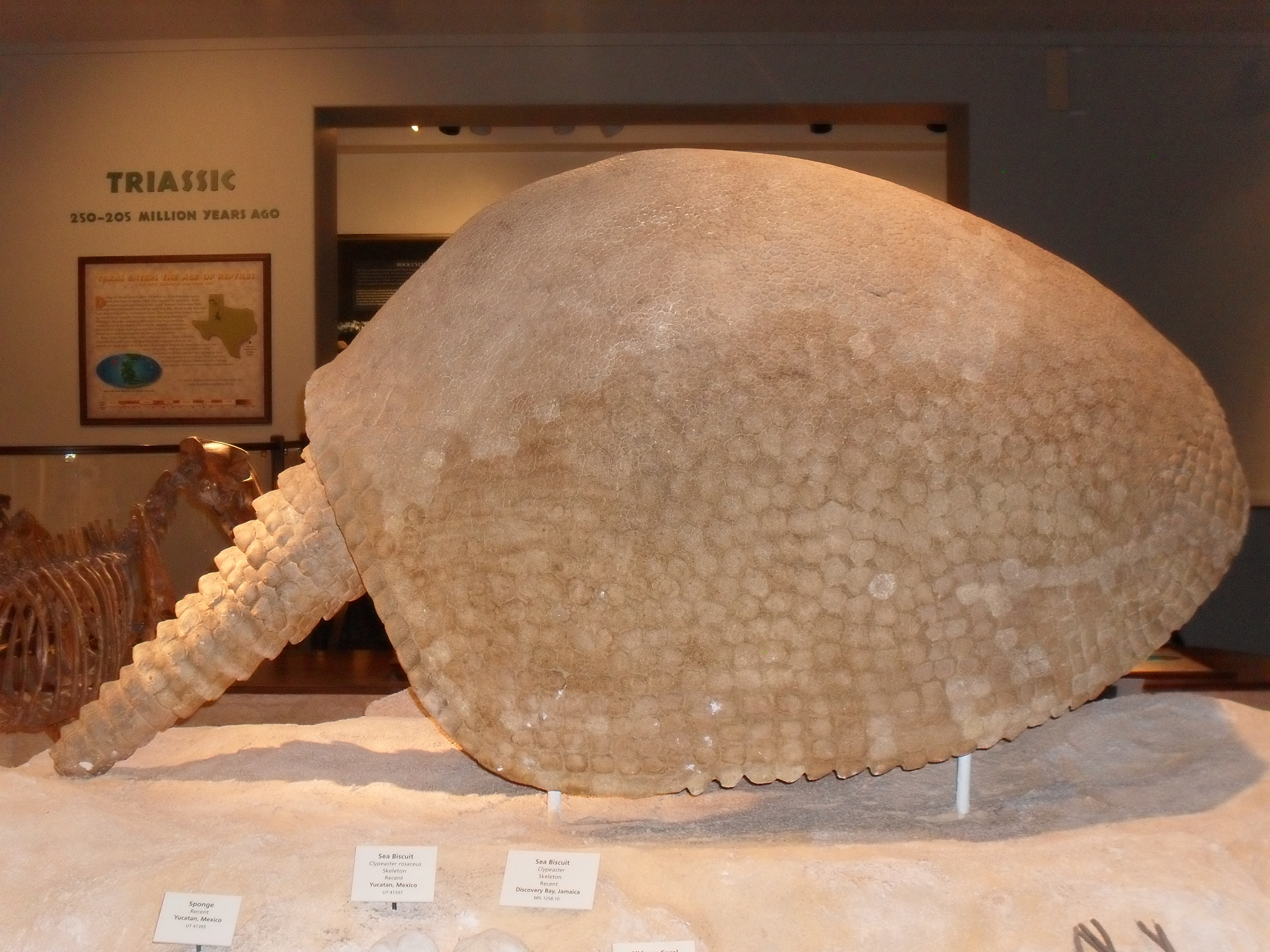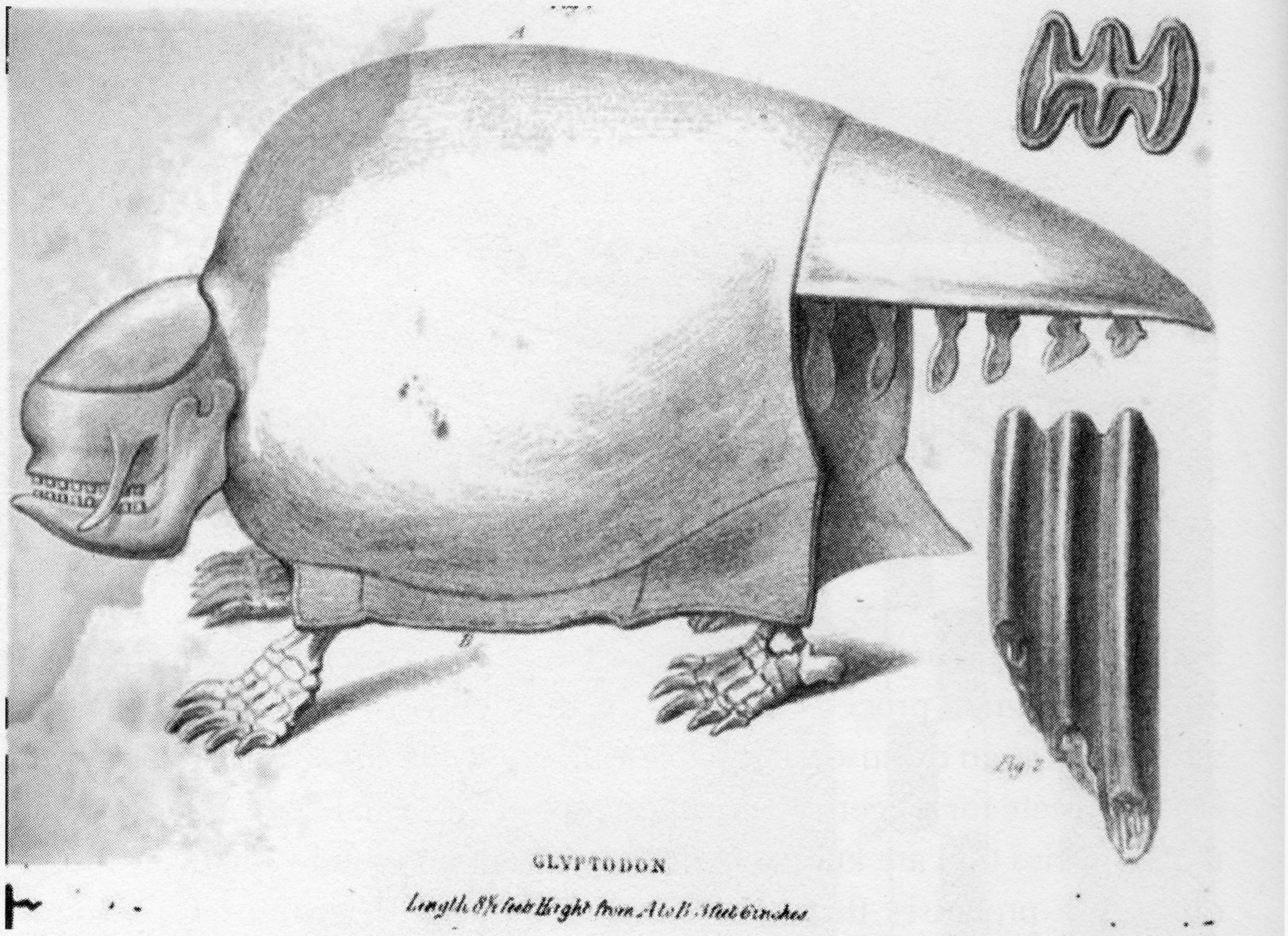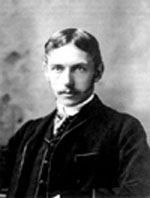|
Glyptotherium
''Glyptotherium'' (from Greek for 'grooved or carved beast') is a genus of glyptodont (an extinct group of large, herbivorous armadillos) that lived from the Early Pliocene, about 4.9 million years ago, to the Early Holocene, around 7,000 years ago, in the United States, Mexico, Guatemala, Costa Rica, Honduras, El Salvador, Panama, Venezuela, and Brazil. The genus was first described in 1903 by American paleontologist Henry Fairfield Osborn with the type species being, ''G. texanum,'' based on fossils that had been found in the Pliocene Blancan Beds in Llano Estacado, Texas, USA. The genus has since been discovered in many more fossil sites. Another species, ''G. cylindricum'', was named in 1912 by fossil hunter Barnum Brown on the basis of a partial carapace, teeth, and several additional fossils that had been unearthed from the Pleistocene deposits in Jalisco, Mexico. Glyptodonts were typically large, graviportal, herbivorous armadillos with armored carapaces that were made ... [...More Info...] [...Related Items...] OR: [Wikipedia] [Google] [Baidu] |
Glyptodon
''Glyptodon'' (from Greek for 'grooved or carved tooth': γλυπτός 'sculptured' and ὀδοντ-, ὀδούς 'tooth') is a genus of glyptodont (an extinct group of large, herbivorous armadillos) that lived from the Pleistocene, around 2.5 million years ago, to the Early Holocene, around 11,000 years ago, in Argentina, Uruguay, Paraguay, Bolivia, Peru, Brazil, and Colombia. It was the first named extinct cingulate and is the type genus of Glyptodontinae, and, or, Glyptodontinae. Many species have been named for the genus, though few are considered valid, and it is one of, if not the, best known genus of glyptodont. Hundreds of specimens have been referred to the genus, but the holotype, or name specimen, of the type species, ''G. clavipes'', was described in 1839 by notable British paleontologist Sir Richard Owen. It was roughly the same size and weight as a Volkswagen Beetle, 800–840 kg (1,760–1,850 lb). With its rounded, bony shell and squat limbs, it superfic ... [...More Info...] [...Related Items...] OR: [Wikipedia] [Google] [Baidu] |
Glyptodont
Glyptodonts are an extinct subfamily of large, heavily armoured armadillos. They arose in South America around 48 million years ago and spread to southern North America after the continents became connected several million years ago. The best-known genus within the group is ''Glyptodon''. While they were formerly considered to constitute the distinct family Glyptodontidae, in 2016, an analysis of ''Doedicurus'' Mitochondrial DNA (also known as mtDNA / mDNA) found that it was, in fact, nested within the modern armadillos as the sister group of a clade consisting of Chlamyphorinae and Tolypeutinae. For this reason, glyptodonts and all armadillos but '' Dasypus'' were relocated to a new family, Chlamyphoridae, and glyptodonts were demoted from the former family Glyptodontidae to a subfamily. Evolution Glyptodonts first evolved during the Eocene in South America, which remained their center of species diversity. For example, an Early Miocene glyptodont with many primitive feature ... [...More Info...] [...Related Items...] OR: [Wikipedia] [Google] [Baidu] |
Honduras
Honduras, officially the Republic of Honduras, is a country in Central America. The republic of Honduras is bordered to the west by Guatemala, to the southwest by El Salvador, to the southeast by Nicaragua, to the south by the Pacific Ocean at the Gulf of Fonseca, and to the north by the Gulf of Honduras, a large inlet of the Caribbean Sea. Its capital and largest city is Tegucigalpa. Honduras was home to several important Mesoamerican cultures, most notably the Maya, before the Spanish Colonization in the sixteenth century. The Spanish introduced Catholicism and the now predominant Spanish language, along with numerous customs that have blended with the indigenous culture. Honduras became independent in 1821 and has since been a republic, although it has consistently endured much social strife and political instability, and remains one of the poorest countries in the Western Hemisphere. In 1960, the northern part of what was the Mosquito Coast was transferred from Nicara ... [...More Info...] [...Related Items...] OR: [Wikipedia] [Google] [Baidu] |
Carapace
A carapace is a Dorsum (biology), dorsal (upper) section of the exoskeleton or shell in a number of animal groups, including arthropods, such as crustaceans and arachnids, as well as vertebrates, such as turtles and tortoises. In turtles and tortoises, the underside is called the plastron. Crustaceans In crustaceans, the carapace functions as a protective cover over the cephalothorax (i.e., the fused head and thorax, as distinct from the abdomen behind). Where it projects forward beyond the eyes, this projection is called a rostrum (anatomy), rostrum. The carapace is Calcification, calcified to varying degrees in different crustaceans. Zooplankton within the phylum Crustacea also have a carapace. These include Cladocera, ostracods, and Isopoda, isopods, but isopods only have a developed "cephalic shield" carapace covering the head. Arachnids In arachnids, the carapace is formed by the fusion of prosomal tergites into a single Plate (animal anatomy), plate which carries the e ... [...More Info...] [...Related Items...] OR: [Wikipedia] [Google] [Baidu] |
Herbivore
A herbivore is an animal anatomically and physiologically adapted to eating plant material, for example foliage or marine algae, for the main component of its diet. As a result of their plant diet, herbivorous animals typically have mouthparts adapted to rasping or grinding. Horses and other herbivores have wide flat teeth that are adapted to grinding grass, tree bark, and other tough plant material. A large percentage of herbivores have mutualistic gut flora that help them digest plant matter, which is more difficult to digest than animal prey. This flora is made up of cellulose-digesting protozoans or bacteria. Etymology Herbivore is the anglicized form of a modern Latin coinage, ''herbivora'', cited in Charles Lyell's 1830 ''Principles of Geology''.J.A. Simpson and E.S.C. Weiner, eds. (2000) ''The Oxford English Dictionary'', vol. 8, p. 155. Richard Owen employed the anglicized term in an 1854 work on fossil teeth and skeletons. ''Herbivora'' is derived from Latin ''herba' ... [...More Info...] [...Related Items...] OR: [Wikipedia] [Google] [Baidu] |
Jalisco
Jalisco (, , ; Nahuatl: Xalixco), officially the Free and Sovereign State of Jalisco ( es, Estado Libre y Soberano de Jalisco ; Nahuatl: Tlahtohcayotl Xalixco), is one of the 31 states which, along with Mexico City, comprise the 32 Federal Entities of Mexico. It is located in Western Mexico and is bordered by six states, which are Nayarit, Zacatecas, Aguascalientes, Guanajuato, Michoacán, and Colima. Jalisco is divided into 125 municipalities, and its capital and largest city is Guadalajara. Jalisco is one of the most economically and culturally important states in Mexico, owing to its natural resources as well as its long history and culture. Many of the characteristic traits of Mexican culture, particularly outside Mexico City, are originally from Jalisco, such as mariachi, ranchera music, birria, tequila, jaripeo, etc., hence the state's motto: "Jalisco es México." Economically, it is ranked third in the country, with industries centered in the Guadalajara metropolit ... [...More Info...] [...Related Items...] OR: [Wikipedia] [Google] [Baidu] |
Barnum Brown
Barnum Brown (February 12, 1873 – February 5, 1963), commonly referred to as Mr. Bones, was an American paleontologist. Named after the circus showman P. T. Barnum, he discovered the first documented remains of ''Tyrannosaurus'' during a career that made him one of the most famous fossil hunters working from the late Victorian era into the early 20th century. Fossil dinosaur expeditions Sponsored by the American Museum of Natural History (AMNH), Brown traversed the country bargaining and trading for fossils. His field was not limited to dinosaurs. He was known to collect or obtain anything of possible scientific value. Often, he simply sent money to have fossils shipped to the AMNH, and any new specimen of interest often resulted in a flurry of letters between the discoverer and Brown. After working a handful of years in Wyoming for AMNH in the late 1890s, Brown led an expedition to the Hell Creek Formation of southeastern Montana. There, in 1902, he discovered and exca ... [...More Info...] [...Related Items...] OR: [Wikipedia] [Google] [Baidu] |
Texas
Texas (, ; Spanish language, Spanish: ''Texas'', ''Tejas'') is a state in the South Central United States, South Central region of the United States. At 268,596 square miles (695,662 km2), and with more than 29.1 million residents in 2020, it is the second-largest U.S. state by both List of U.S. states and territories by area, area (after Alaska) and List of U.S. states and territories by population, population (after California). Texas shares borders with the states of Louisiana to the east, Arkansas to the northeast, Oklahoma to the north, New Mexico to the west, and the Mexico, Mexican States of Mexico, states of Chihuahua (state), Chihuahua, Coahuila, Nuevo León, and Tamaulipas to the south and southwest; and has a coastline with the Gulf of Mexico to the southeast. Houston is the List of cities in Texas by population, most populous city in Texas and the List of United States cities by population, fourth-largest in the U.S., while San Antonio is the second most pop ... [...More Info...] [...Related Items...] OR: [Wikipedia] [Google] [Baidu] |
Llano Estacado
The Llano Estacado (), sometimes translated into English as the Staked Plains, is a region in the Southwestern United States that encompasses parts of eastern New Mexico and northwestern Texas. One of the largest mesas or tablelands on the North American continent, the elevation rises from in the southeast to over in the northwest, sloping almost uniformly at about . Naming The Spanish name is often interpreted as meaning "Staked Plains", although "stockaded" or "palisaded plains" have also been proposed, in which case the name would derive from the steep escarpments on the eastern, northern, and western periphery of the plains. Leatherwood writes that Francisco Coronado and other European explorers described the Mescalero Ridge on the western boundary as resembling "palisades, ramparts, or stockades" of a fort, but does not present the original Spanish. In ''Beyond the Mississippi'' (1867), Albert D. Richardson, who traversed the region from east to west in October 1859, wrote ... [...More Info...] [...Related Items...] OR: [Wikipedia] [Google] [Baidu] |
Type Species
In zoological nomenclature, a type species (''species typica'') is the species name with which the name of a genus or subgenus is considered to be permanently taxonomically associated, i.e., the species that contains the biological type specimen(s). Article 67.1 A similar concept is used for suprageneric groups and called a type genus. In botanical nomenclature, these terms have no formal standing under the code of nomenclature, but are sometimes borrowed from zoological nomenclature. In botany, the type of a genus name is a specimen (or, rarely, an illustration) which is also the type of a species name. The species name that has that type can also be referred to as the type of the genus name. Names of genus and family ranks, the various subdivisions of those ranks, and some higher-rank names based on genus names, have such types. [...More Info...] [...Related Items...] OR: [Wikipedia] [Google] [Baidu] |
Henry Fairfield Osborn
Henry Fairfield Osborn, Sr. (August 8, 1857 – November 6, 1935) was an American paleontologist, geologist and eugenics advocate. He was the president of the American Museum of Natural History for 25 years and a cofounder of the American Eugenics Society. Early life and education Family Henry Fairfield Osborn was born in Fairfield, Connecticut on August 8, 1857 in a family of distinction. He was the eldest son of shipping magnate and railroad tycoon William Henry Osborn and Virginia Reed ( née Sturges) Osborn. His maternal grandparents were Jonathan Sturges, a prominent New York businessman and arts patron who was a direct descendant of Jonathan Sturges, a U.S. Representative from Connecticut, and Mary Pemberton Cady, a direct descendant of prominent educator Ebenezer Pemberton. His maternal aunt Amelia Sturges, was the first wife of J. P. Morgan, but died of tuberculosis soon after their wedding. His younger brother was William Church Osborn, who served as presiden ... [...More Info...] [...Related Items...] OR: [Wikipedia] [Google] [Baidu] |
Paleontology
Paleontology (), also spelled palaeontology or palæontology, is the scientific study of life that existed prior to, and sometimes including, the start of the Holocene epoch (roughly 11,700 years before present). It includes the study of fossils to classify organisms and study their interactions with each other and their environments (their paleoecology). Paleontological observations have been documented as far back as the 5th century BC. The science became established in the 18th century as a result of Georges Cuvier's work on comparative anatomy, and developed rapidly in the 19th century. The term itself originates from Greek (, "old, ancient"), (, ( gen. ), "being, creature"), and (, "speech, thought, study"). Paleontology lies on the border between biology and geology, but differs from archaeology in that it excludes the study of anatomically modern humans. It now uses techniques drawn from a wide range of sciences, including biochemistry, mathematics, and engineering. ... [...More Info...] [...Related Items...] OR: [Wikipedia] [Google] [Baidu] |




_grazing_-_20050809.jpg)



_(2).jpg)

